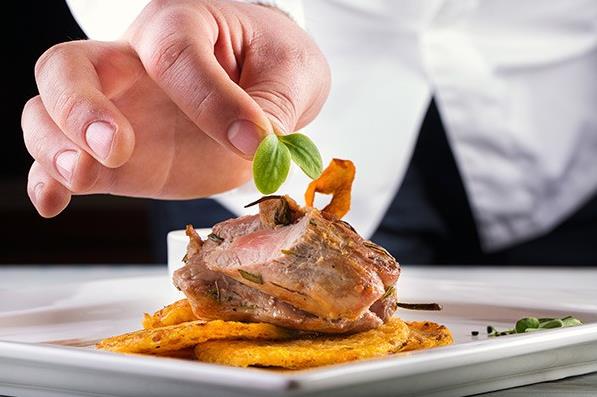
Every restaurant operator knows how vital it is to keep your menu up to date. Whether you're adding seasonal specials, showcasing your new chef's talents, or keeping up with food trends, the dishes you serve should change somewhat regularly. When you're ready to add a new item to your menu, follow these steps to calculate an appropriate price.
1. List the Ingredients
Start by listing all the ingredients that go into your new menu item. Include everything - from a teaspoon of olive oil in the pan to a pinch of salt. If you're serving a dish that is prepared to taste (think mild, medium, or spicy curry), then account for how much of each ingredient you would use for each option.
2. Price out each Ingredient
Pricing out each ingredient that goes into your new dish is the tricky part. Start with the price of each bulk item. For instance, if you're serving a salad that includes carrots, start by looking the cost to your restaurant of 1 bunch of carrots. Then, find out how many carrots come in each bunch. Finally, divide the cost of the bulk item by the number of units that can be used in the dish, to come up with the cost per unit. Here's what that looks like:
- Carrots - $3 per bunch
- 10 carrots in a bunch
- $3 per bunch/10 carrots = $3/10 = $0.30 per carrot.
So you can see that each carrot costs 30 cents. Now, let's say that your salad includes 2 carrots. You would take your cost per carrot, and put it into this formula:
(cost per unit) x (units per dish) = cost of ingredient per dish
$0.30 x 2 = $0.60
And you find that in each salad, you spend 60 cents on carrots.
Repeat this process for every ingredient in your recipe, and then add all the prices together.
Bear in mind: these formulas can get a little more complicated if your units need to be converted. You can glance at a bunch of carrots and count how many carrots you have. But what about a 20-lb bag of flour? Or a 1-gallon jug of olive oil? It's a good idea to start by making the conversion from pounds to cups - or from gallons to teaspoons - before you start with the first formula.
3. Factor in your overhead
There's more to your dish than just the edible ingredients. What disposable equipment do you use to make it? If it's served to-go, then be sure to calculate the cost of each takeout container. If it needs to be refrigerated overnight, then include the cost of the saran wrap you use to preserve it. Add up the labor costs as well: how much time does it take your kitchen staff to make each dish? A salad might be assembled in just a few minutes while smoking a brisket can take several hours of labor.
There may be other, additional costs associated with special items - the cost of electricity, or even the cost of water. Make sure to do a complete analysis of all these expenses when calculating the total cost of a dish to your restaurant.
4. The Price is Right
Once you know how much it costs your restaurant to make your dish, you're ready to decide how much it should cost your customers. This formula may come in handy:
[Total food cost] + [Total equipment cost] + [Total labor cost] = Your total cost
Up until this point, every number we've worked with has been predetermined. These are the prices you pay - to vendors, to your staff, and even to your state's government - to be in business. Finally, it's time to talk about the artistic side of menu pricing. This formula will determine your menu item's final price:
[Your total cost] + [Your profit margin] = Price to a guest
Choosing a reasonable profit margin is delicate work. It's important to choose a price that feels fair to everyone - otherwise, your item won't sell as well as it should. Guests will be unwilling to buy an item they think is priced too high. On the other hand, you should ensure that your restaurant is making a profit. If you price your items too low, then no amount of sales will put you in the black. You can make a consistent profit by pricing each menu item with a low but reliable profit margin, so every single sale improves your bottom line.
Menu pricing is a dynamic process. No matter how well you price your dishes today, the cost of ingredients is guaranteed to go up and down over the next several years. A successful restaurant leaves room to change menu prices along with the changing market, engaging with guests' expectations and always leaving room for profits. It's also a good idea to undergo regular business reviews, to be sure your menu items are priced competitively.
Source: runningrestaurants.com









